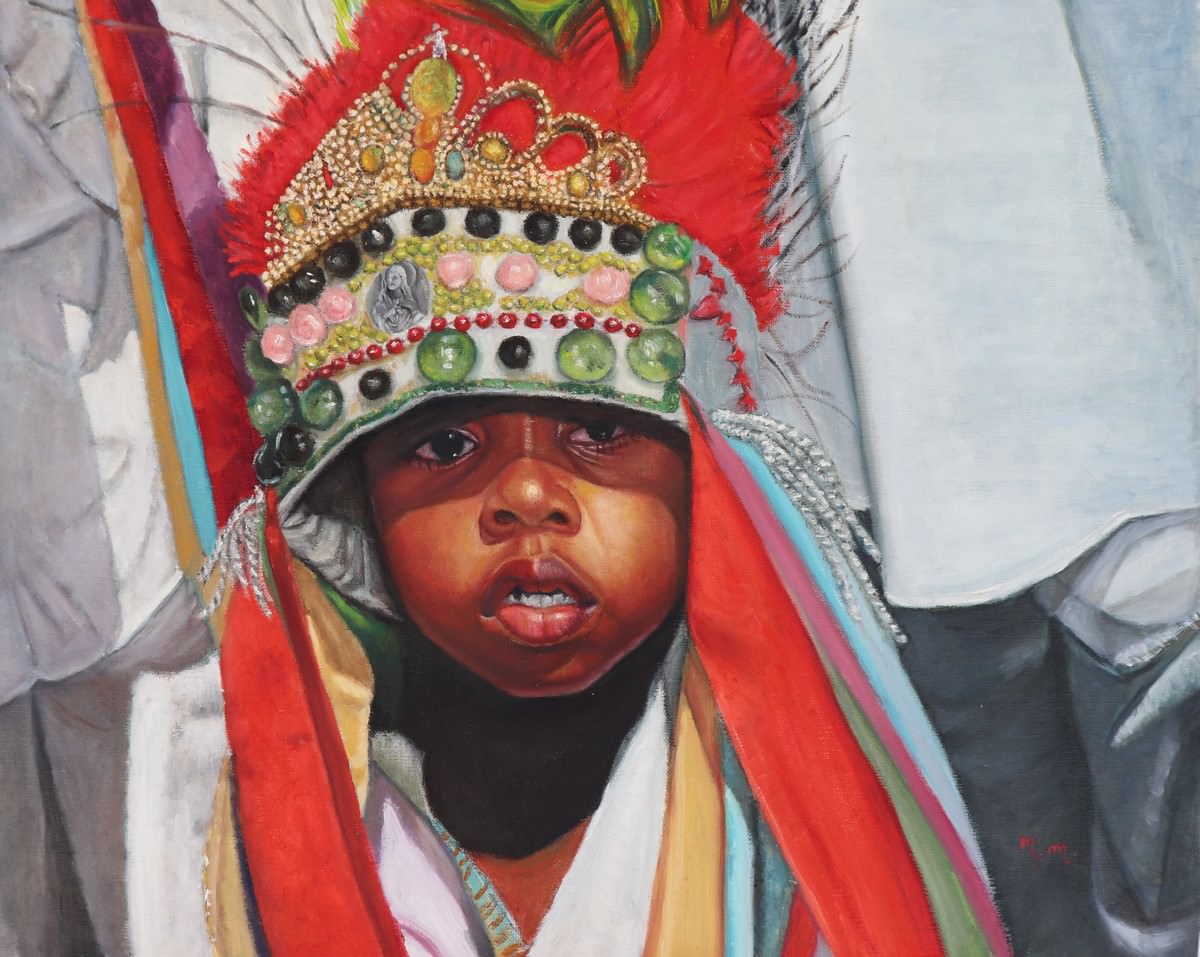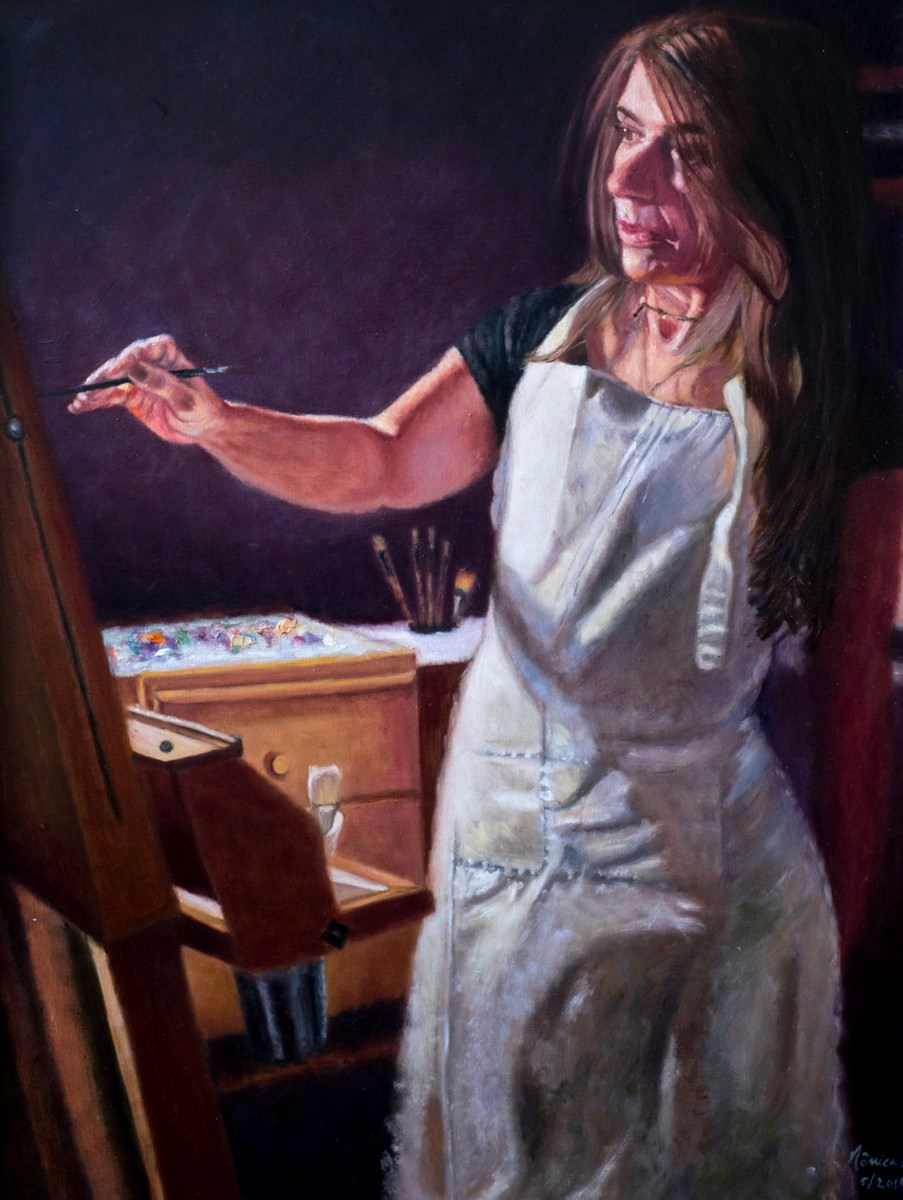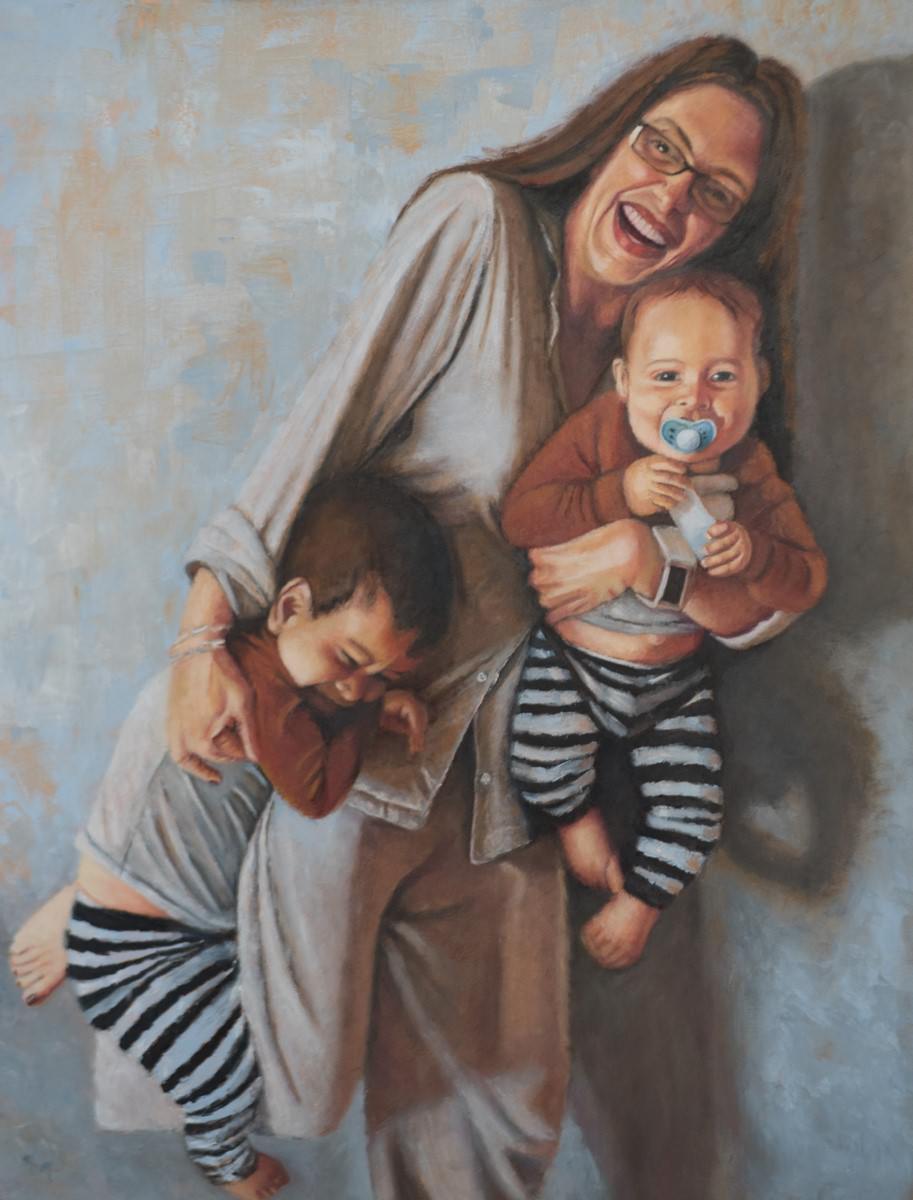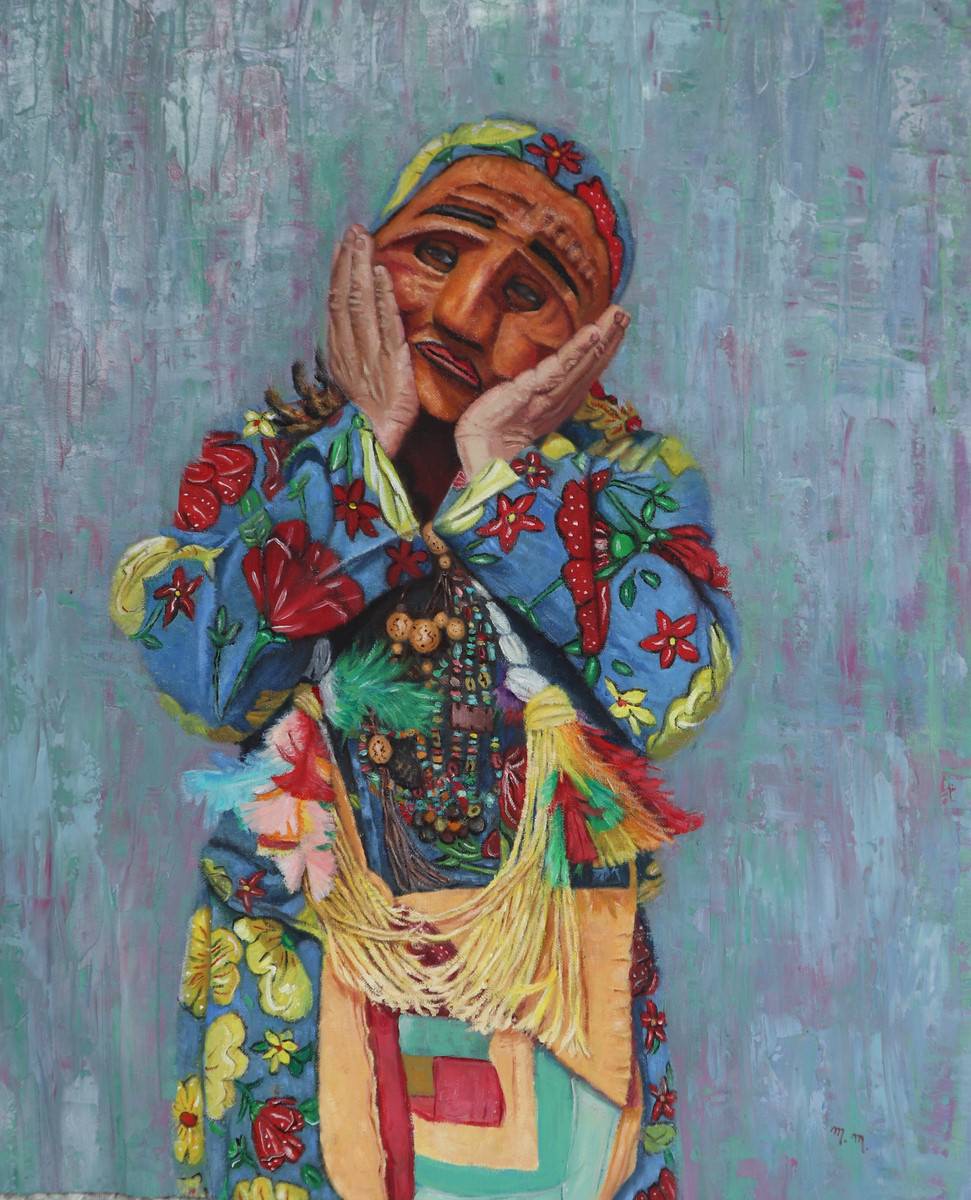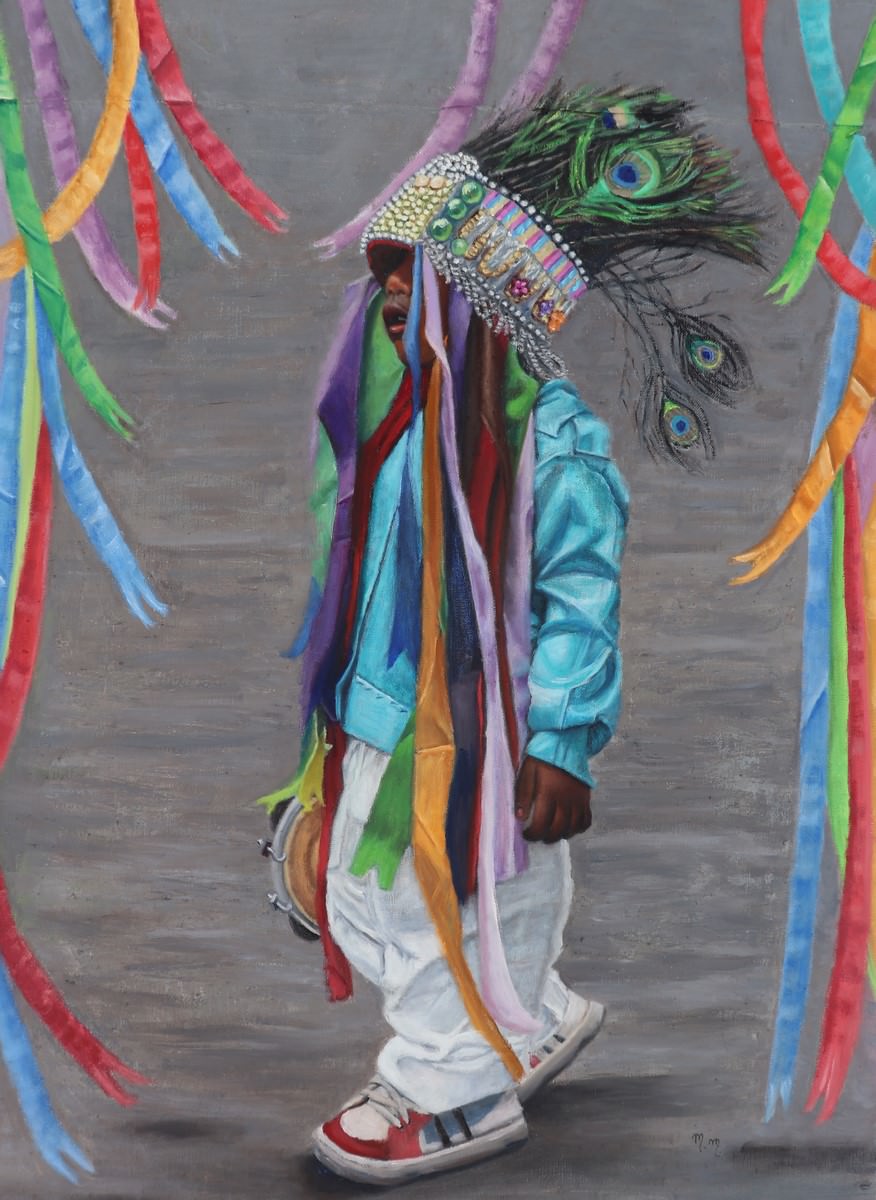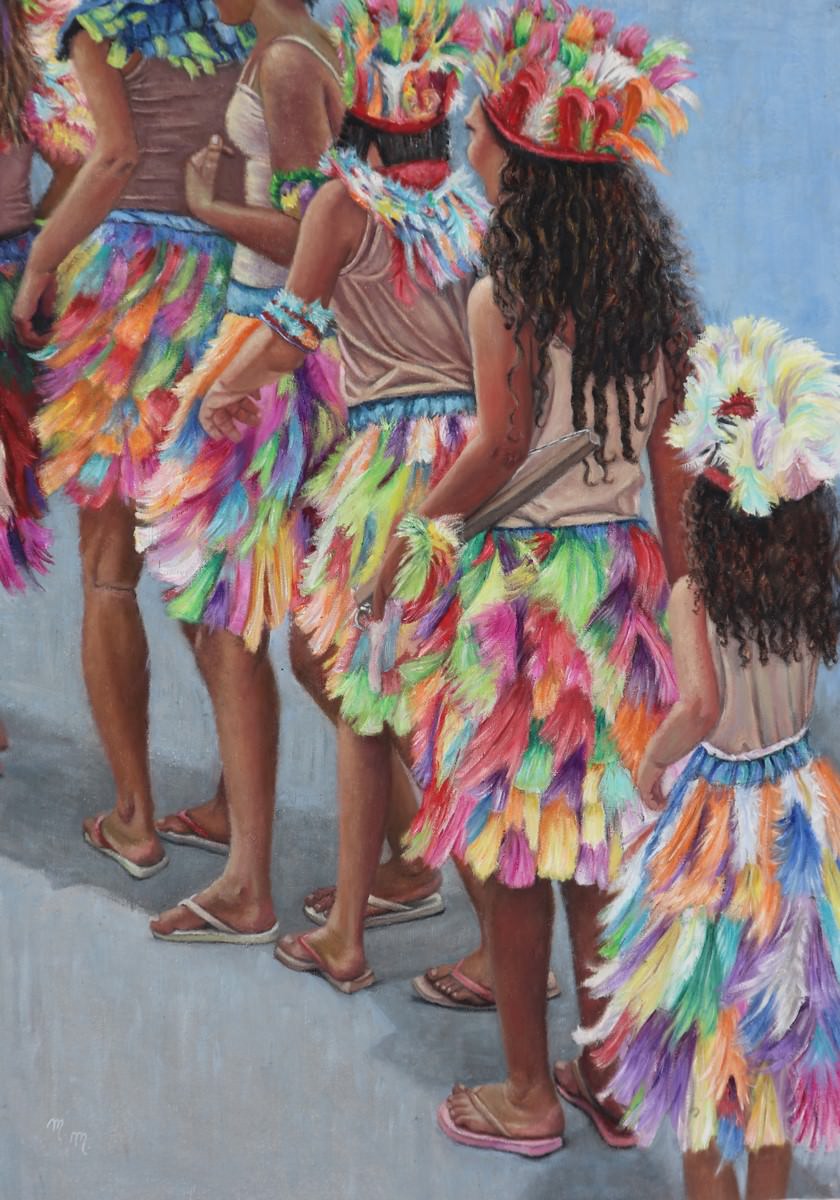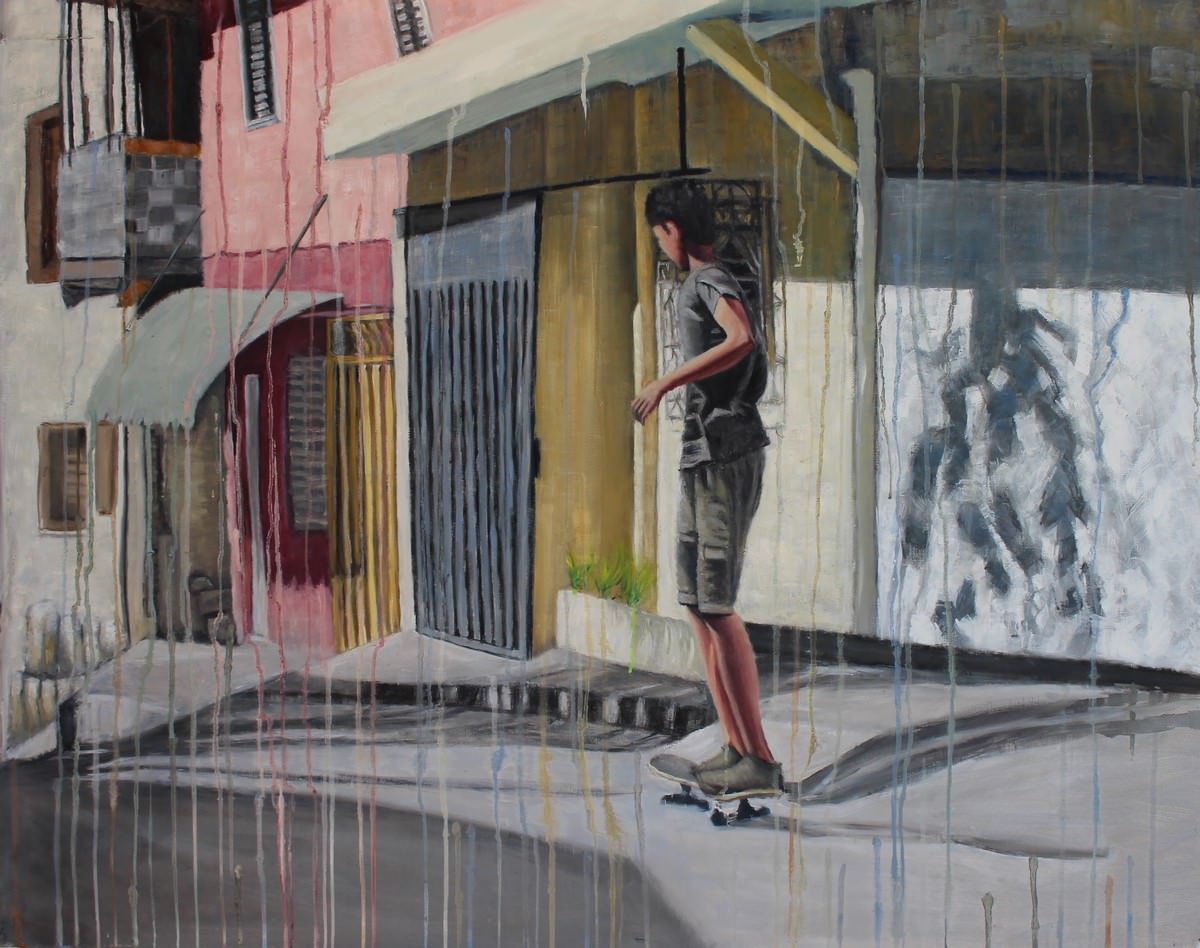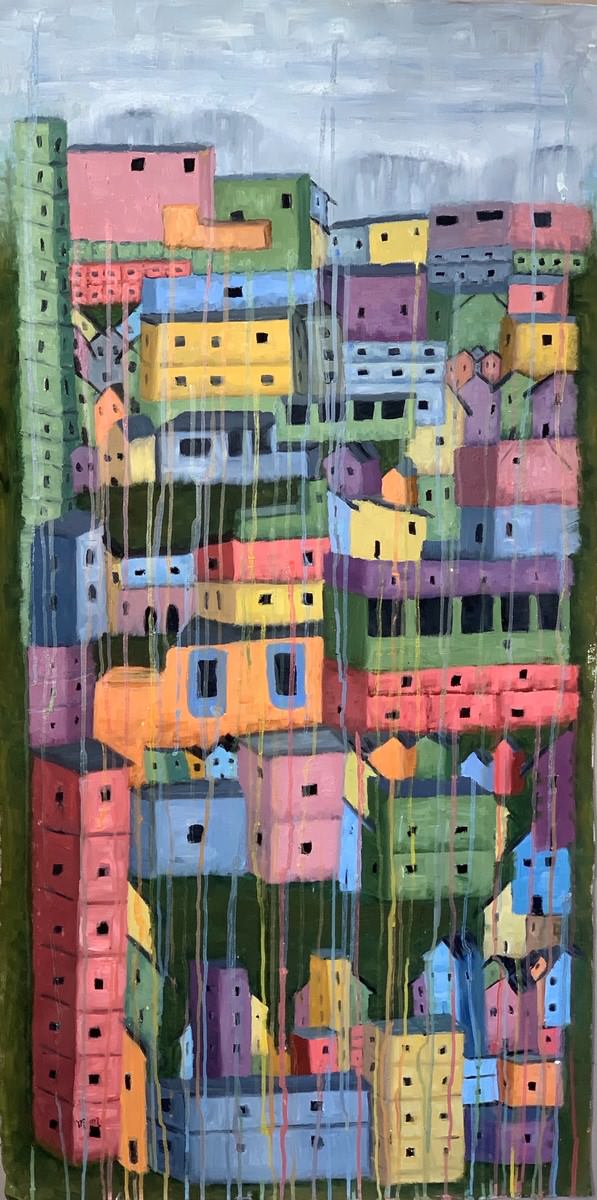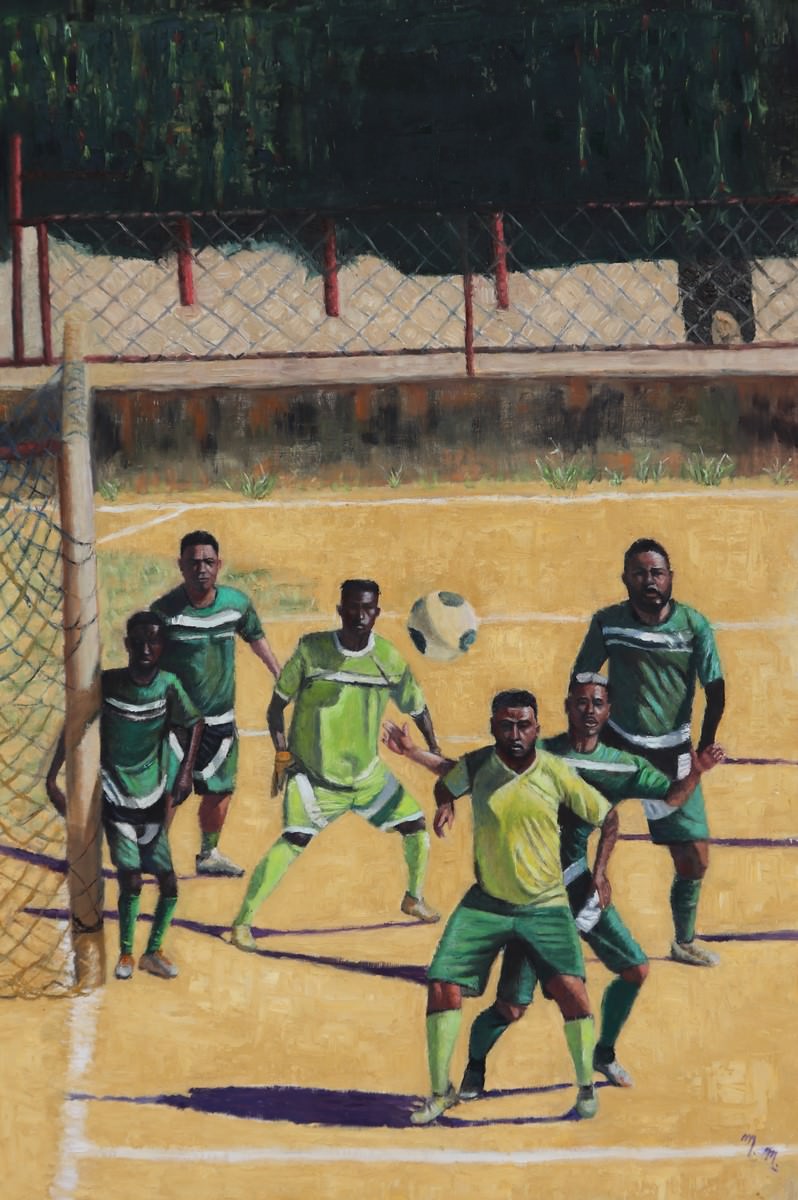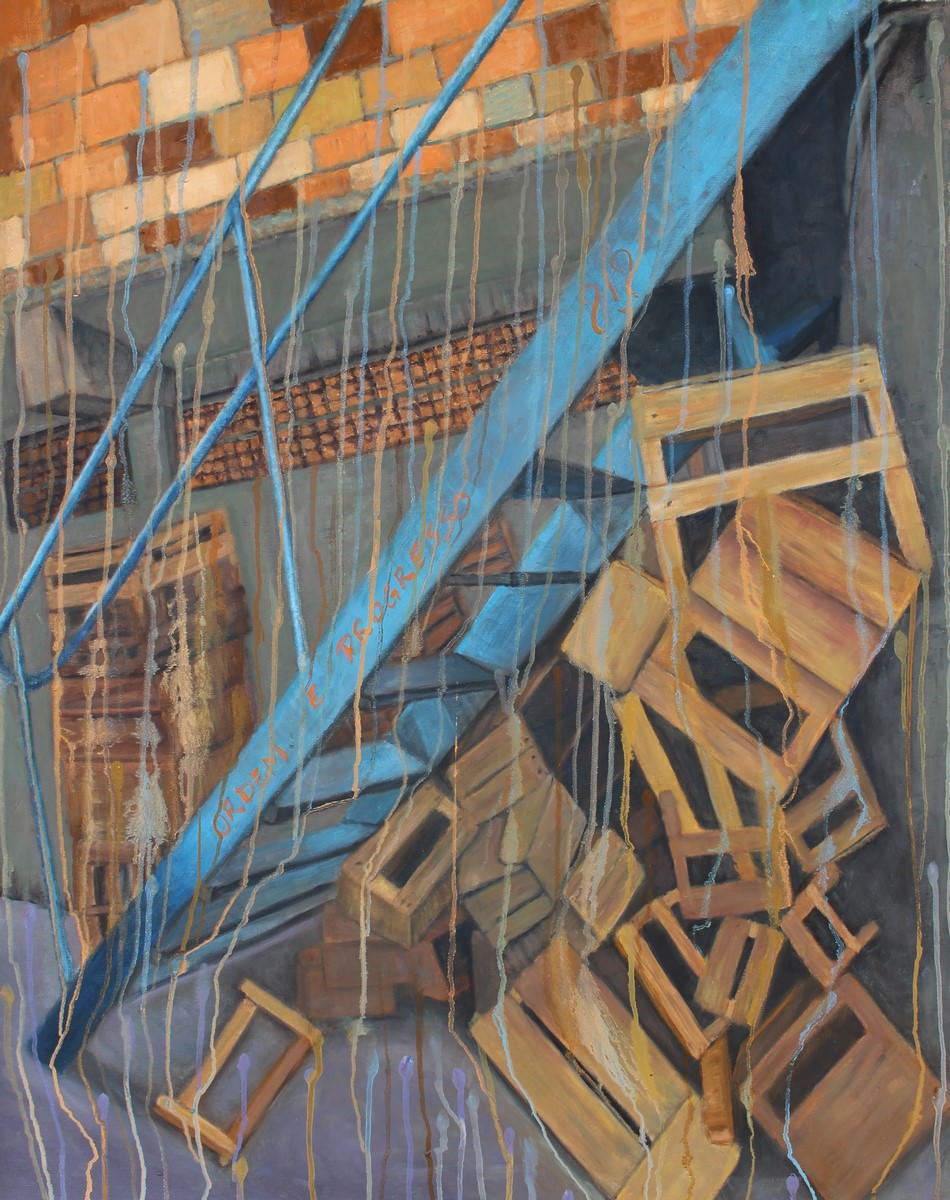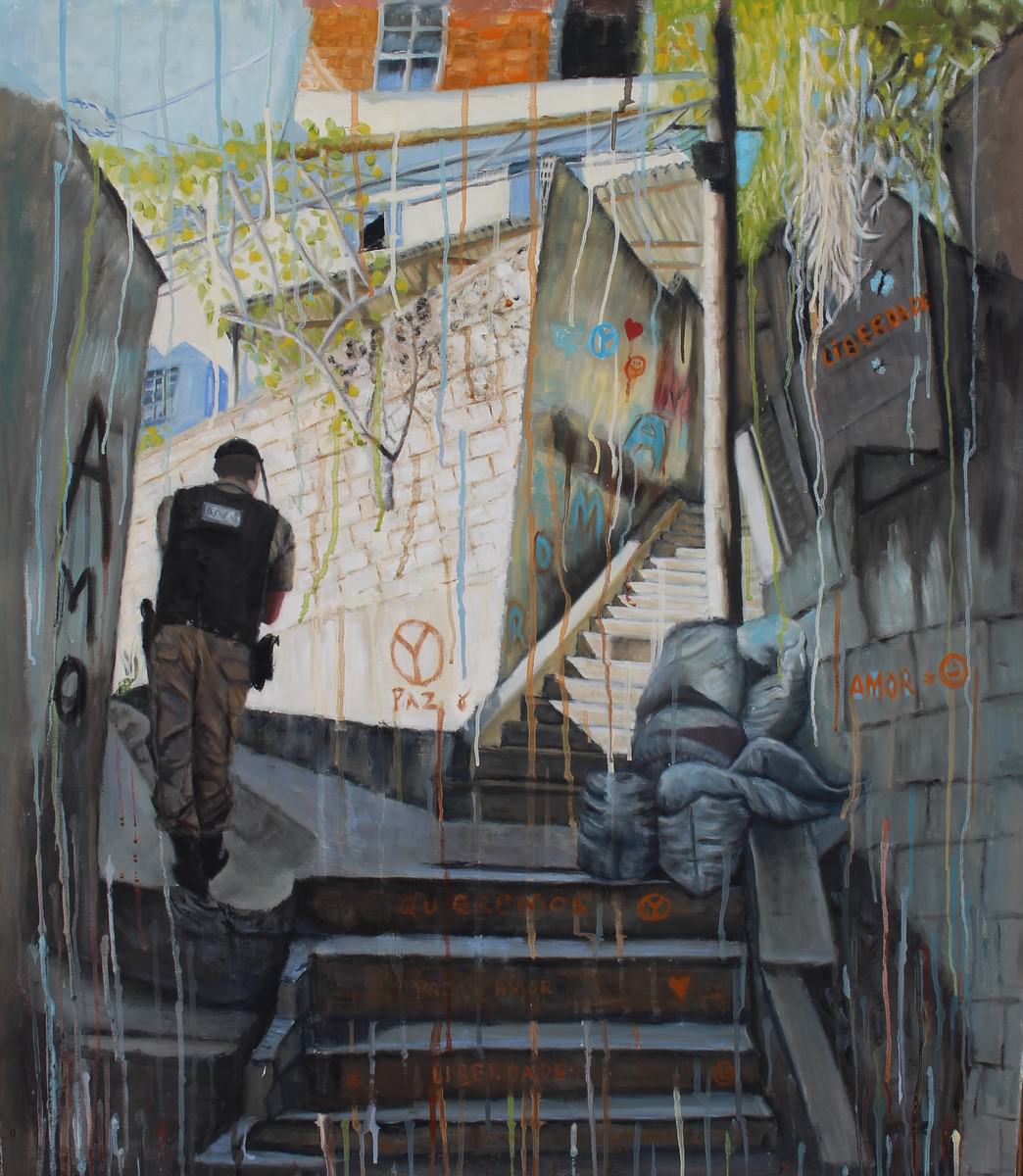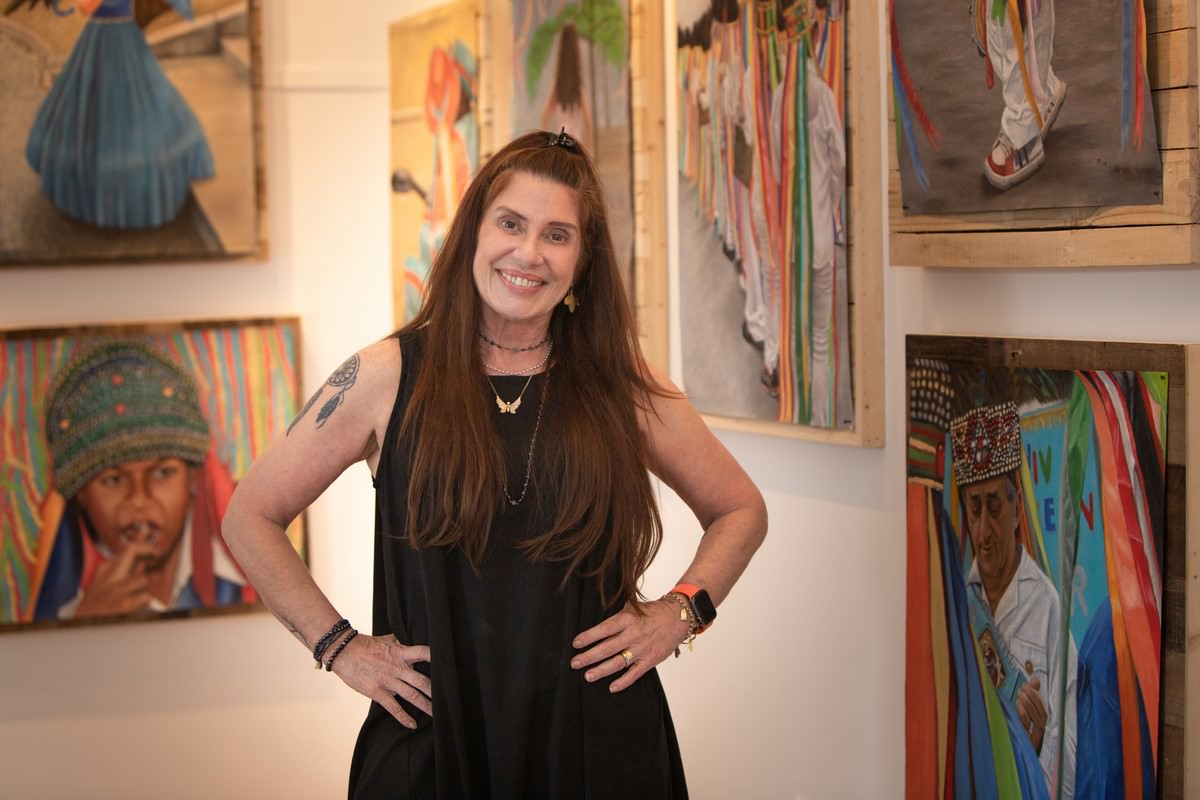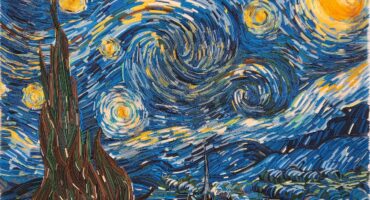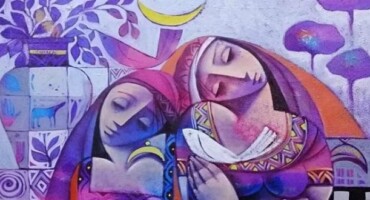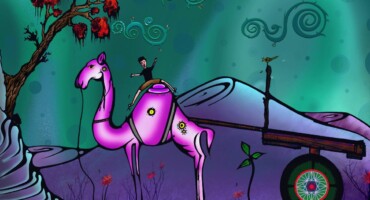
Award-winning artist, regularly participates in various exhibitions, fairs and art shows around the world.
“Painting is a daily exercise and requires discipline in addition to love and dedication. It is a constant struggle to overcome. (..)” – Monica Mendes
Monica, tell us a little about yourself ...
I'm Mineira and half Cearense too, after all my father was from Ceará and my mother was from Minas Gerais. Born in Belo Horizonte I graduated in Public Relations in BH, I studied physical education in Miami and did a master of fine arts in San Francisco.
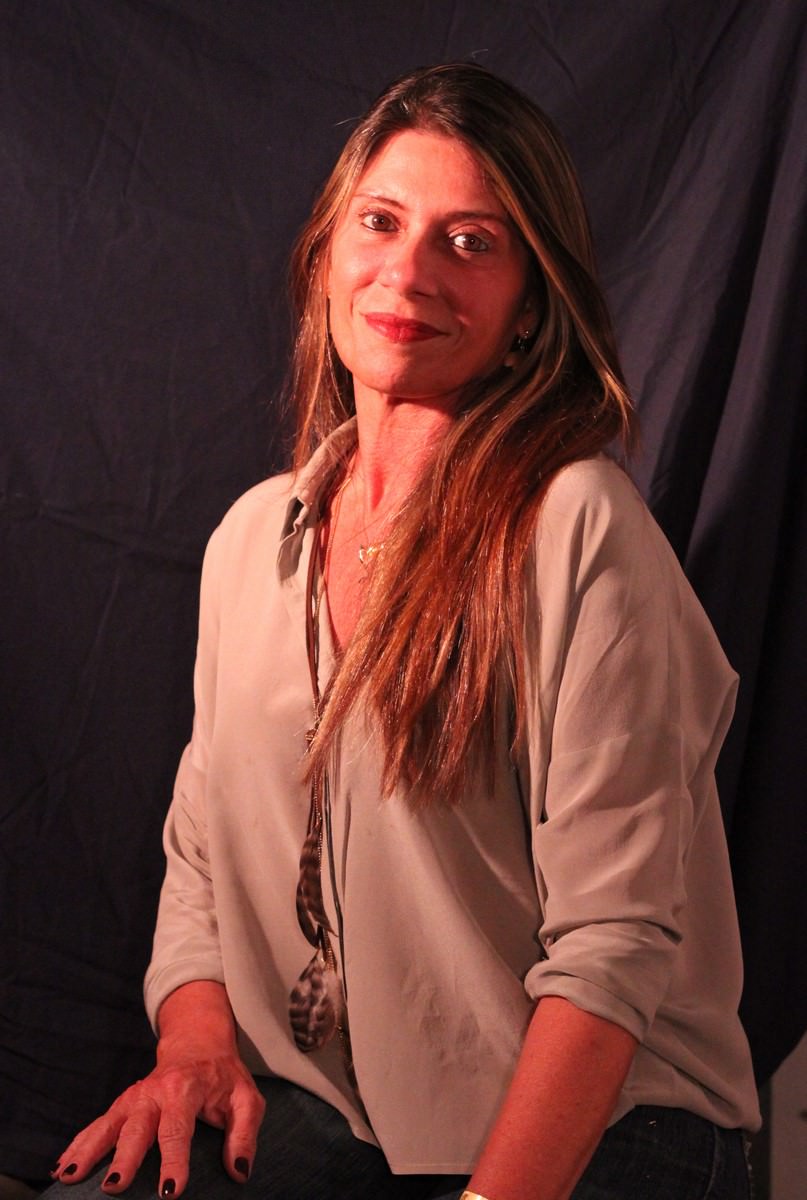
I worked in this area as Public Relations, for two years before I moved to Peru and later to the United States. Em Miami, exercised the profession of Personal Trainer for 15 years. Although neither profession was my greatest passion, both gave me great insight with respect to human physical and verbal expressions. These experiences helped to shape the way I saw around you, and myself. All of this became the source of my expression as an artist.
My passion for art started when, a child, sucked the lessons distilled by those that would be my life examples. My grandmother, aunt and mother were not only lovers of the arts, but also dedicated artists. Despite the artistic roots in my childhood, I started my artistic trajectory only in 2009, when I opened my own studio. My commitment led me to obtain a Master Degree of Fine Arts in Painting in 2016, by the Academy of Art University in San Francisco.
When she awoke her desire to be an artist?
As I said, my relationship with art came when I was still a child because my mother, aunt and grandmother were artists. But I just started taking art seriously more or less 10 years ago when I decided to go to San Francisco and do my Master in Fine Arts at the Academy of Art University.
What kind of art do you like best?
I like all kinds of art who can communicate with me. But my style is figurative.
How he developed his style (techniques)?
My work is developed in the plastic arts segment, specializing in oil painting, no figurative style, but I also use the acrylic and media mix technique with cardboard resin.
Cite if you had artistic influences in your works and which artists?
All three, my mother, grandmother and my aunt, were figurative artists and liked to paint portraits among other things. There are so many wonderful artists, so many different styles and so many people that inspire me from the great masters to people of my daily life. Motivates me every day the creativity of my friend Cecilia Thibes, Carlos Alves and the paintings of Blima Efraim. I also love the paintings by David Kassan and his wife Shana Levenson who graduated from the Academy of Arte University with me, as well as the sensational paintings by Omar Ortiz, Jonh Asaro, Jeffrey T Larson, Daniel Gerhartz and the great Nicolai Fechin. Painting is a daily exercise and requires discipline in addition to love and dedication. It is a constant struggle to overcome and these artists, without a doubt, are a source of motivation, encouragement and inspiration.
Do you have a family member or acquaintance who is an artist?
I have several friends who are artists and as my mom said, grandmother and aunt are also artists. I mean, my grandmother and my mother, Unfortunately, died already, but my aunt is still actively painting.
Living from art is possible?
Undoubtedly living on art is no easy task, but yes it is very possible.
Ever thought about not acting with more art? can comment why?
Not, never!
What skills are needed today for the artist?
Painting is a daily exercise and requires discipline in addition to love and dedication. It is a constant struggle to overcome.
What do you feel when you create or appreciate a work of art?
When I create a work of art I feel full, satisfied because my goal when creating a work is to communicate with the people who look at it, is a dialogue with the observer. It's like I'm writing a story, and the most interesting thing is that the different interpretations only enrich my work, that is, the viewer does not have to guess what I am trying to pass through that work, he has his own interpretation. After all, we are different people, with different stories and the same work can have different meanings. This dialogue between the observer and my work is my main goal.
Your inspirations to create a work of art?
My art is representational and humanitarian. Prejudices and injustices bother me. I believe that, such as artist, I have social responsibility and I want to do what I can to contribute to a better world for everyone. People have always been my great inspiration, they make the world a better or worse place, we have enormous potential that when used well does wonders. I like to believe that the human being is essentially.
Which art has impressed you the most so far?
I can't answer that question because there are so many wonderful works that we are constantly enjoying that it becomes really difficult to say.
[divider]
[divider]
You must always be creating or creating only at certain times?
I create every day of my life. I'm in the studio daily and my head doesn't stop. Inspiration and creation is an exercise like any other and needs dedication.
The product of your work is unique or has a close or distant relationship to your previous work?
I always try to create a series with the same theme. So it was with the portraits, with the favelas, and with Catopes.
What are the challenges of art / artist in the current scenario?
Good, nowadays, an artist cannot just paint, he also has to understand social media and marketing. The artist must always be updated with what is happening in the art market and try to act in those markets.
Social networks have helped you to spread your work?
Yes, today you can’t have your work on social networks because it is undoubtedly a great ally in the dissemination of art.
How plastic arts can contribute to education and culture?
Contact with artistic and cultural manifestations in school education contributes significantly to the development of human beings.
Artistic stimulation stimulates self-knowledge and the recognition of the other as a being equally endowed with attributes that make him a unique being. Through his inspirations and creations, the individual can access and express his feelings. When contemplating the productions of her colleagues she is able to identify what brings them together and what discerns them. Distinguish your own limitations and potential as well as that of the other, is a way to acquire security and, self esteem (empowerment) and empathy. People who learn to express their emotions tend to establish beneficial, balanced and healthy interpersonal relationships.
Realize the variety of colors, figures, sizes, arrangements and symbols that make up the world widen our horizons, opens our universe of possibilities for knowledge and interpretation of the world around us.
To combat prejudice and discrimination, nothing better than information and knowledge. It is necessary to understand that cultural diversity, the plurality of thought, ideas, expectations and manifestations, promote materialization, the evolution and enrichment of human experience.
Openness to dialogue, empathy and respect for differences are essential values for building a more just society, supportive and inclusive – in which everyone has the right to be who they are and the possibility to develop their potential.
How you analyze the qualities of a work of art?
Good to better understand the function and purpose of a work of art we must evaluate the roles played by the artist that are: Register the world, promote a palpable form to feelings, reveal hidden or universal truths, and help to see the world in an innovative way and different from the traditional.
Art is an indication of the thinking and beliefs of societies at different times.
A work of art must, first of all attract the senses and for that, she doesn't need to be beautiful. Art can draw attention to the subject, by the colors, for being realistic or abstract, hair wearing symbols, for the style that is the personal mark of the artist's creativity, historical facts and the reaction it provokes in the observer.
In a work of art the elements are shown in order to communicate a meaning beyond the literal. An artist communicates with the observer or audience through a screen. Unlike a book or movie, information and message are limited to a single image. For this communication to happen, the artist uses elements of composition, like colors, forms, lights, shadows, spaces, lines and tones, textures, brush strokes and etc.
As the observer examines and explores the artwork, the reaction he had when observing the painting is more and more complete and personal. By reacting, the observer makes several connections, that can be linked to each other's personal experiences, or they can be linked to the connection between an element and / or a gesture and its meanings or also to its context in the story.
Sign up to receive Event News
and the Universe of Arts first!
What are the criteria for stipulating the value of a work of art?
The price composition of a piece of art takes into account, among other factors: The artist's history; the exhibitions in which he participated; if you have works in museums; if your screens are inserted in important collections and creation period.
It is important to note that the work of the same artist can vary widely in price depending on the time of composition or the type of work: if it is a screen, a photography, a sculpture or an engraving – remembering that the printed pieces are generally cheaper than the single pieces.
And, finally, whether the work will be accompanied by a certificate of authenticity, that can be issued by the artist, some representative of yours or the gallery that is selling it.
For artists already deceased, we still have to consider if there is a project for cataloging and authenticating the works, which gives greater security in the purchase.
Talk about your projects today ...
I currently have a project together with my friend, partner and musician, Tino Gomes with whom I did the series, Catopezera, The Sound Of Colors. In this new project, we show Jequitinhonha and Tennessee to show how human beings can be the same in different parts of the world and how welcome differences are. We have already started the project by traveling through the Jequitinhonha Valley and photographing our mining culture so rich in craftsmanship, music and folklore. Then we will make the trip to Tennessee identifying the similarities between the two regions. Tino brings my screens to life and I color his music. A wonderful partnership!
I have another project that will be a cultural manifesto made between several artists, but it is still crawling.
In addition, I also want to paint our Indians, I also want to be able to illustrate racial and gender prejudice. Anyway, I have many projects in my head, some of them are already underway and others are being planned. My head doesn't stop, I have many stories to tell through my brush strokes.
What's your advice for those just starting out?
I still have a lot to learn but I think with patience, a lot of discipline and enjoying the walk there is no way to not work!
[divider]
CATOPEZERA VIDEOS – THE SOUND OF COLORS:
[divider]
If you want to leave a message ...
I think the best way for people to contribute to the formation of a better world is through their work, through what we do best. If each of us can do our part, the world will surely be a fantastic place and we will be moving more quickly towards our evolution as human beings.
About your exhibitions, have any comments regarding, feelings…
It was very exciting during the exhibition in Japan with ExpoArte, at the Brazilian consulate, find that right in the hall next to where we were exhibiting, I was able to see a portrait of my father in an exhibition that honored Brazilians who stood out in Japan. My father, unfortunately already died and i am sure i would be very happy to know that we were together in Japan, country that he lived for more than 3 years and that I admired so much.
I will also never forget my first exhibition at the Inima de Paula Museum in Belo Horizonte, where I presented “Expressions of My People”, a series of 87 portraits of loved ones, friends and family. It was an exciting night, a dream that came true!
How would you define your art in one line?
My art is representational and humanitarian, I am bothered by prejudices and social injustices.
Social Media:
Instagram: @monicamendesartista
Facebook: @ www.MonicaMendesArtist
* Thanks to Buana Lima, advisor to the plastic artist, for all the pertinent information the interview.
…

